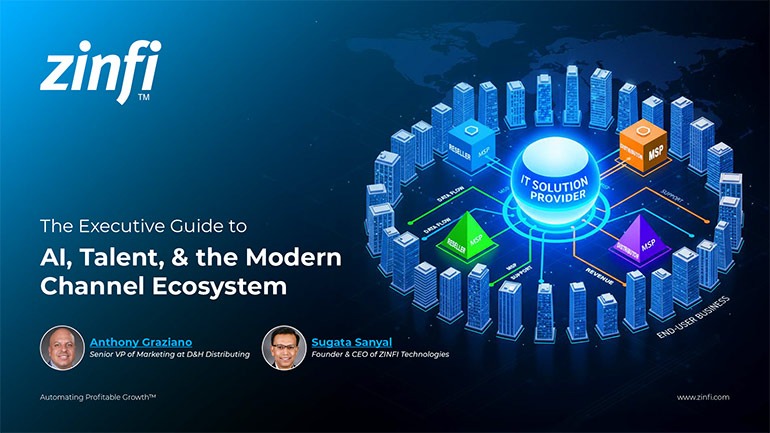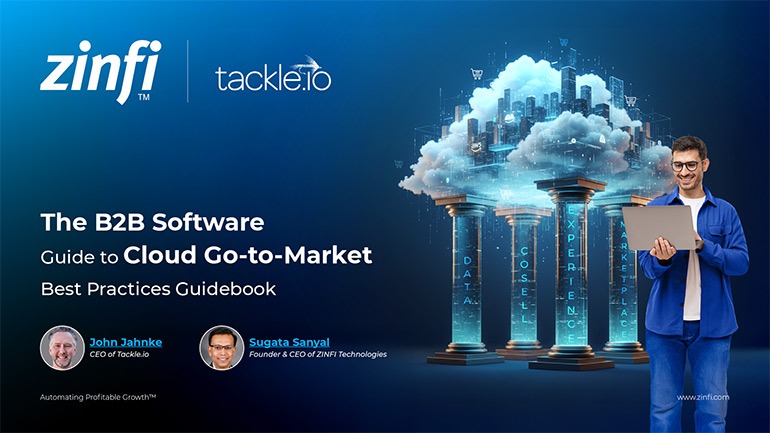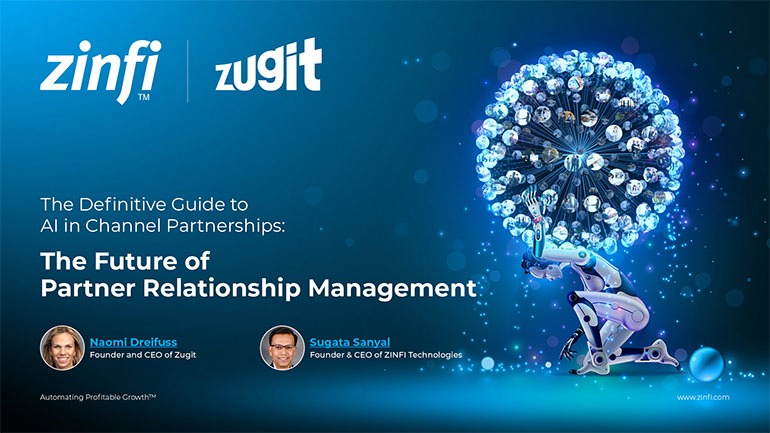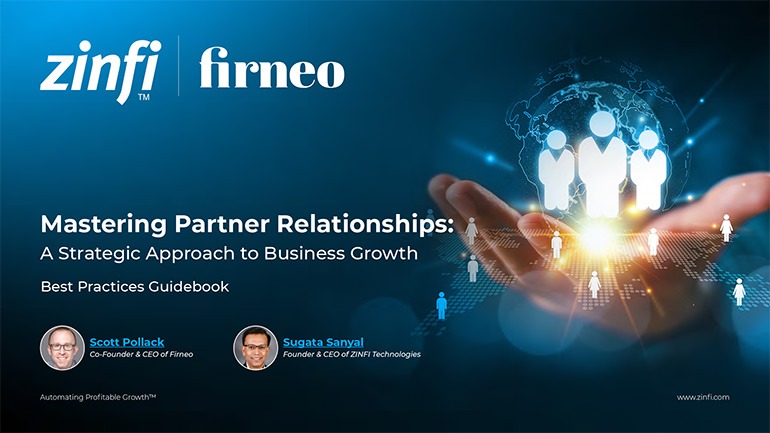Best Practices Articles

How to Make Unified Partner Management A Reality
There is no doubt that channel management is complex. (For more on this, see our previous posts, 5 Myths of Channel Management and Challenges of Channel Management.) However, it’s made more complex when it is managed through a set of tools and systems that can easily be compared to a patched-up quilt. In many organizations, channel management systems actually consist of a hodgepodge of diverse systems that have evolved over a long period of time. As a result of that, most companies today that try to implement a unified approach to their channel management struggle to make it work and get a decent return on their investment. The primary reason underlying this problem is a lack of available end-to-end systems that can readily adapt to each organization’s unique needs. Every company is different. So, for example, a horizontal product like a customer relationship management (CRM) system cannot really address the requirements for unified partner management. As a result of that—while marketing automation systems have evolved quite a bit over the last few years, and CRM systems have also progressed—no company has completely addressed the need for unified partner management.
So, how are organizations managing the channel today?
Partner portal: Most companies that are selling through the channel today have a partner portal. They build this partner portal over a period of years with various sets of tools, but there are no consistent standards that address how a portal should be built, and requirements also vary considerably across different types of channels. For example, if you’re looking at a dealer network where the relationship is highly transactional, the partner portal will look very different from a portal in, say, the tech industry, where a solutions provider is working very closely with one or more technology providers to bring in complex, integrated solutions to the market. Similarly, a partner portal in the retail and franchise segment of the marketplace will be unique to those kinds of businesses. Because of this diversity in needs across segments, no vendor has been able to address the requirements for all segments.
Partner records: If we look at how most companies are selling through the channel, and in particular how they manage their partner records or their channel records, we find that most of them are using a CRM or some sort of home-grown database. In fact, based on a survey we conducted, more than 40% of companies actually end up managing their partner list on an Excel spreadsheet. That’s kind of scary, but that’s where the market is today.
Partner onboarding: When it comes to building and growing a channel, partner onboarding is a critical first step. Yet most companies today try to manage partner onboarding with some sort of combination of CRM and Microsoft Office tools like Excel, and some even resort to keeping track through paper records.
Partner programs: To manage partner programs, some companies have started to use marketing automation tools like Oracle Eloqua or Marketo for direct marketing. However, those tools are way too complex for most organizations and they are not flexible enough to be deployed in a multi-tier channel where corporate can load campaigns and content, and then distribute those materials to their partners and execute marketing initiatives in variety of shapes and forms.
Partner training is another area where very few companies have structured systems in place. But what’s the point of recruiting partners if you don’t have a structured way of getting them trained and increasing their competencies? Many large enterprises today have some sort of learning management system (LMS), but when you take a step down to companies below the $500 million level, or to companies that sell to other segments, they typically have serious issues managing partner training.
A final, and very important, area of concern is partner incentives management. This is yet another area where it’s quite commonplace to deploy a patchwork of multitude systems for managing market development funds, rewards, rebates, etc.
So, as we consider the challenge of unified partner management, we see that although companies may have the best of intentions in their efforts to pull together the right programs, the deployment and execution of those programs can be an absolute nightmare because there are no end-to-end systems that exist today to make it happen. However, companies like ZINFI and a few others are now working very hard to innovate with the goal of providing a complete, end-to-end, unified partner management infrastructure that can be not only modular but also comprehensive if all the modules are turned on and used in the right order.
If we step back and look at the problem from a systems perspective at a macro level and consider the core requirements of unified partner management, we can break it down into five parts, what I call the five Ps:
- Profiles (partner profile management): Partner profiles represent the most important first step in understanding existing partners’ capability to sell into various segments of the market. Establishing the partner profile is also a precursor to expanding and growing the channel based on an understanding of what type of DNA an organization should be looking for when they are trying to recruit new partners. Without a sophisticated database system, it’s almost impossible to analyze and manage a diverse set of partner profiles to drive productivity.
- Policies: Channel policies determine who will sell to what and how. Here’s what I mean: If a channel program has various types of partners, the competencies and reach of those partners, as well as the relationships they bring in, determine whether or not they are actually able to sell. If those policies are not absolutely clear, unified partner management becomes really hard because organizations won’t know what exactly to implement.
- Programs: When we talk about programs, we’re referring not just to campaigns like partner recruitment and partner training, but also the ability to put together market-segment-oriented solutions, training, incentives and so on to provide a truly unified partner management framework that allows an organization to recruit, engage, enable and manage their partner base to achieve a desired level of growth. Programs are critical, but they need to be analyzed from an ROI perspective. A unified partner management system should provide the tools that an organization needs to quickly perform such an analysis.
- People: This is one of the most important Ps. The structure of a channel organization—how the field organization is structured, how territories are mapped, how the relationships between the regions and the worldwide organization work—all of these factors contribute to the broader framework required for people management to drive performance. However, without the right structure and the right unified partner management system mapped into that structure, it’s almost impossible to move fast enough and see through a dashboard what is going on in real time.
- Platform: This is where tools and systems come in. Earlier I talked about why platforms are important. However, before a company can deploy a truly unified partner management system at a global level, it must think through the first four Ps mentioned above. How are we going to manage our partner profiling and profiles? What actions are we going to take based on that understanding? Are there policies in place that need to be aligned or streamlined? And can we streamline policies without a channel management system in place? What programs makes sense, and what data do we have to analyze programs and dynamically respond based on ROI analysis? How can we align the people to look for the most efficient structure? Once these questions have been answered, we’re in a much better position to consider how to implement a system on a step-by-step basis so the organization is not overwhelmed but is able to systematically increase its maturity level through transparency and performance management globally.
Based on the points I’ve made above, you can see that unified partner management is indeed complex. However, with a thoughtful approach that focuses on the five Ps I’ve outlined here, an organization can create a maturity map through which they can substantially improve the performance of their channel organization by taking a unified approach to channel management and also deploy systems that will make unified partner management a reality.
Best Practices Guidebook
 Modernizing Channel Marketing: AI and Ecosystem Enablement Best Practices
Modernizing Channel Marketing: AI and Ecosystem Enablement Best PracticesDownload for FREE
 The Channel’s Shift to Partner-Led With AI Best Practices
The Channel’s Shift to Partner-Led With AI Best PracticesDownload for FREE
 Hyperscalers, ISVs, and AI: Shaping the Future of B2B Software Distribution
Hyperscalers, ISVs, and AI: Shaping the Future of B2B Software DistributionDownload for FREE
 Definitive Guide to a Partner Ecosystem-First Sales Strategy
Definitive Guide to a Partner Ecosystem-First Sales StrategyDownload for FREE
 The Partner-Led Digital and AI Transformation Best Practices
The Partner-Led Digital and AI Transformation Best PracticesDownload for FREE
 Startup Talent Recruitment: Hiring Missionaries, Not Mercenaries
Startup Talent Recruitment: Hiring Missionaries, Not MercenariesDownload for FREE
 The Future of Partner Relationship Management with AI in Partnerships
The Future of Partner Relationship Management with AI in PartnershipsDownload for FREE
 Cybersecurity for the 99%: Strategies from the Frontline
Cybersecurity for the 99%: Strategies from the FrontlineDownload for FREE
 Mastering Partner Relationships: A Strategic Approach to Business Growth
Mastering Partner Relationships: A Strategic Approach to Business GrowthDownload for FREE
 Mastering Partner Relationship Management: Keys to SaaS Channel Success
Mastering Partner Relationship Management: Keys to SaaS Channel SuccessDownload for FREE
 Navigating the AI Revolution: Guide for Partners in the Microsoft Ecosystem
Navigating the AI Revolution: Guide for Partners in the Microsoft EcosystemDownload for FREE
 Mastering the Modern Buyers Journey: Sales Leader’s Guide to AI & Engagement
Mastering the Modern Buyers Journey: Sales Leader’s Guide to AI & EngagementDownload for FREE










